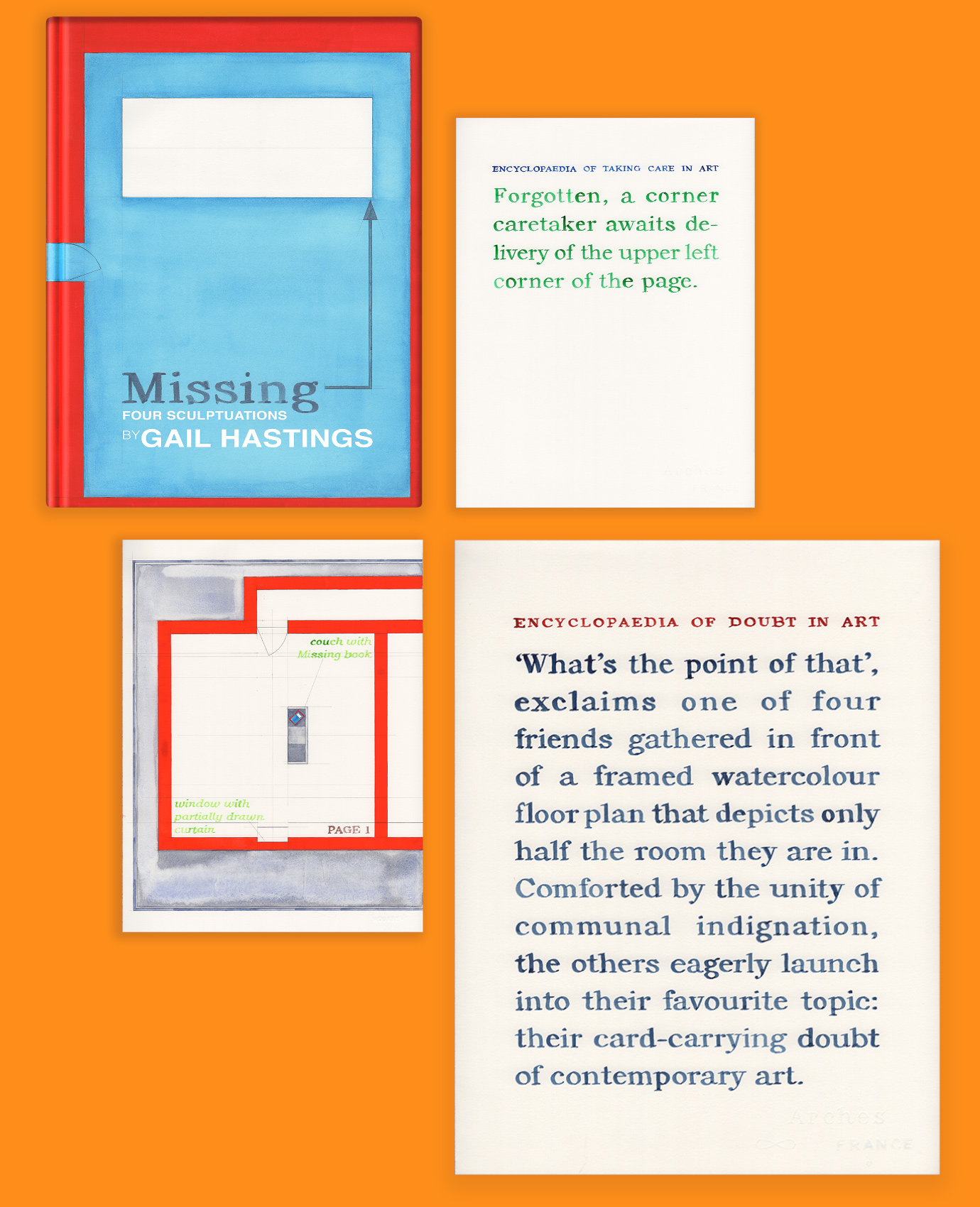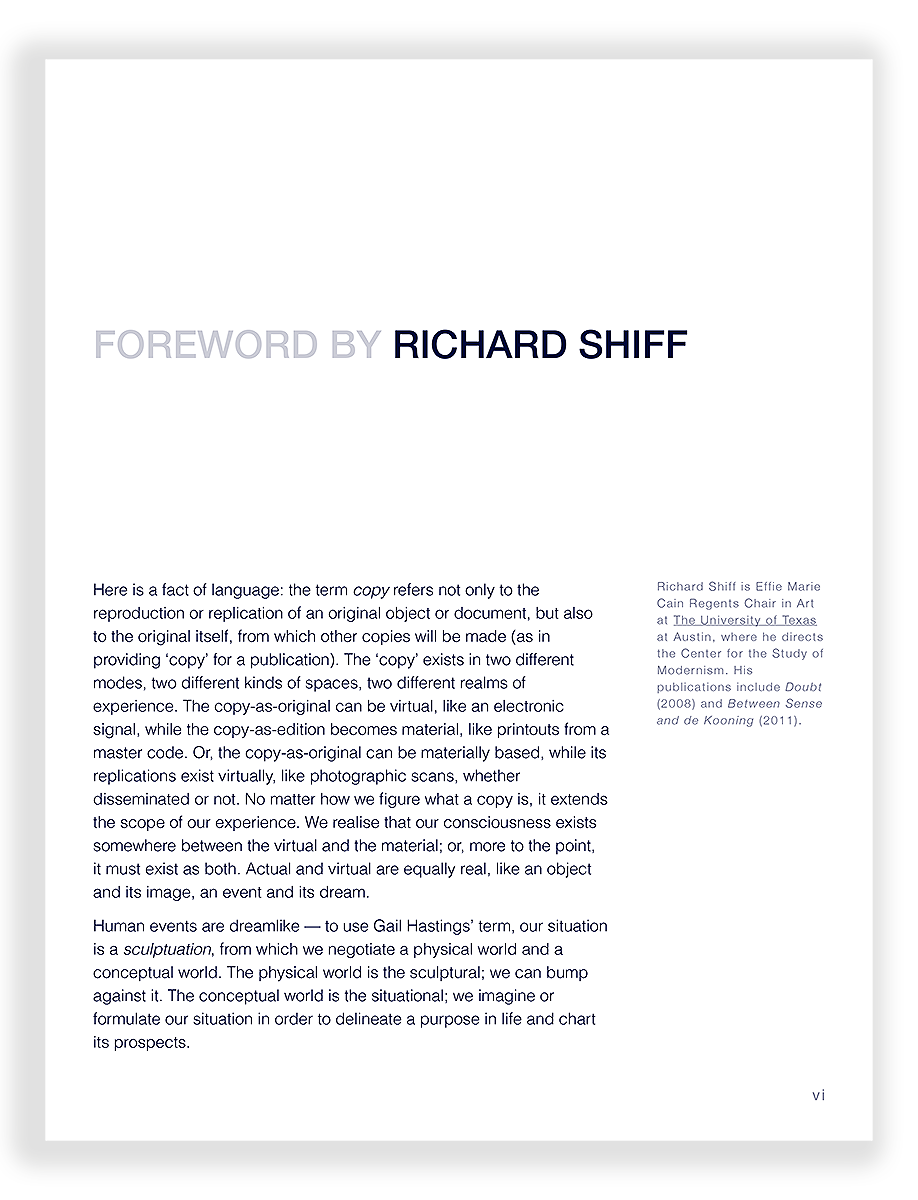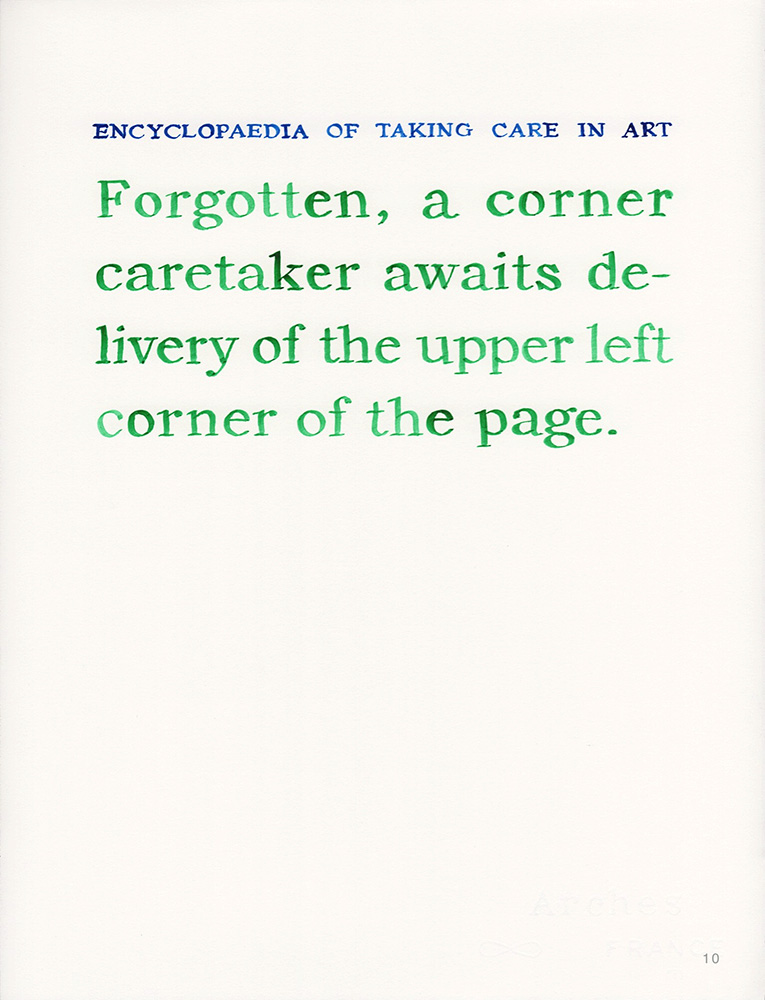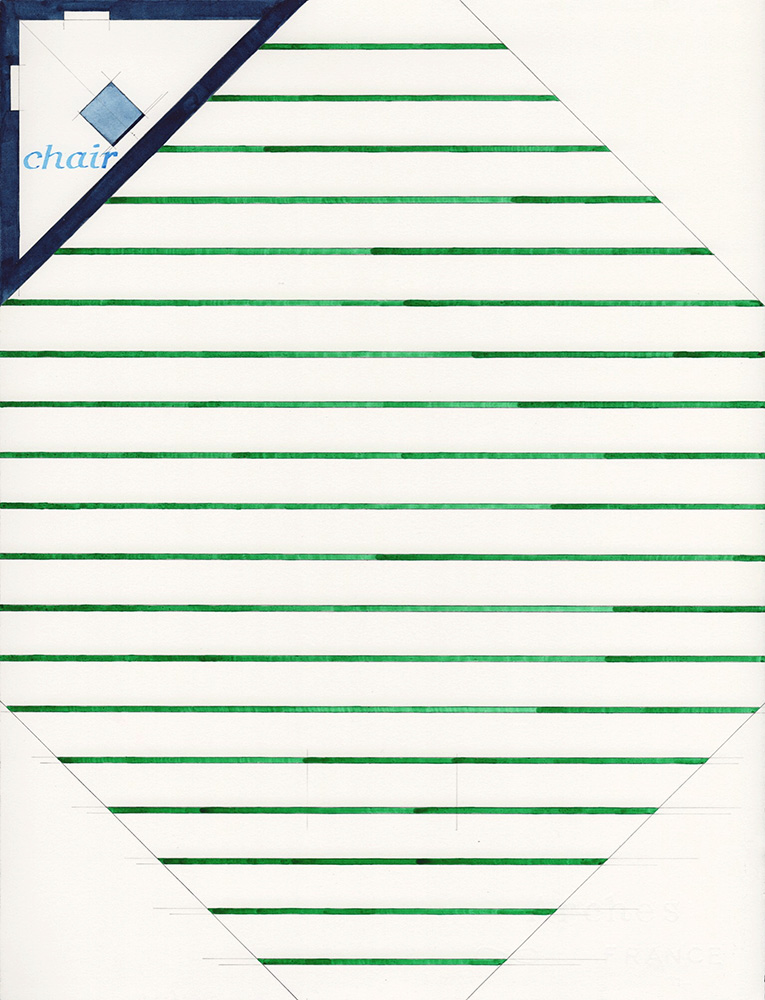Missing
Four Sculptuations
by Gail Hastings
with a foreword by Richard Shiff
$17.99 AUD (incl GST)

Images above:
Missing book cover as it appears in the Apple Books Store;
First of 12 pages, ‘Corner caretakers’;
First of 8 pages, ‘The distance of doubt’;
Second of 10 pages, ‘Space of a five page plot’.
ANNABEL CRABB takes a look
When Charles Saatchi’s gallery opened in South Bank, with its notorious list of headliners (chunks of frozen human blood, sump oil lagoons and rooms full of chopped-up cattle), one small corner was devoted to a collection of newspaper cartoons lampooning the works.
My favourite was one in which an Eskimo, gazing at Damien Hirst’s pickled tiger shark, turned to a fellow visitor with the remark: ‘My five-year-old son could’ve done that’.
Interaction with art can be an occasion for hilariously multi-directional anxiety. The artist, observing someone observing her work, feels an unbearable cocktail of solicitude and vulnerability. The observer, knowing she is observed, frets that she’s missing something.
Is loud art — sledgehammer art — trying to abolish this moment of tender confusion? A message delivered by means of a decomposing rattlesnake chained to a chocolate wheel may still prove confounding to some viewers, but at least there’s something to talk about in the interim. No awkwardness need ensue, when the spectacle itself fills the silence.
Quiet art, like the work of Gail Hastings, chooses instead to inhabit that moment and furnish it with humour.
Am I missing something? — the timeless fretful self-interrogation of the enthusiastic but apprehensive gallery-creeper — becomes, in Missing, the shape of the artwork itself.
It’s funny, because everyone recognizes this tendency in the civilian art-lover; this scrupulous and obedient hunt for scraps of meaning hidden here and there by the artist, failure to spot any of which might constitute a serious inadequacy.
It’s courageous, because of all the compulsions that I imagine might grip an artist in the act of creation, the temptation to spell it out must surely be one of the hardest to resist.
And it’s generous, because the greatest expression of faith and trust an artist can possibly articulate in the unknown person who will — somewhere down the track — pause in front of her work is to invite them in to it. To allow them the run of the place. To give them the thrill of being in on the joke.
Gail Hastings’ work achieves quite a remarkable state of grace. Taut control in design and execution, coupled with an exhilarating and generous capacity to turn things over, at exactly the right time, to the viewer.
Four friends gather to take comfort in their card-carrying doubt of contemporary art while, in a five-page plot, readers suspect they have missed whatever they are meant to get.
These are two of four sculptuations that comprise Missing: Four Sculptuations by Gail Hastings. The first of the four artworks is the book’s cover that goes ‘missing’ in each of the other three. This is the sort of thing that happens in a sculptuation — which is neither sculpture nor painting, but a three-dimensional work of art. Strange, since these four sculptuations present as watercolours in a book and nothing like the sculpture we see in a museum. Three-dimensional space is real and not pictorial, isn’t it? Need the real go missing for the imaginary to exist?
It is a tireless question for visual artists, especially sculptors such as Gail Hastings. Even so, the question finds some rest in a foreword by art historian Richard Shiff who discusses the being (or non-being) of Missing.
| Table of Contents | |
| Missing (entry) | i |
| Foreword by Richard Shiff | vi |
| Preface by Gail Hastings | viii |
| Corner caretakers | 1 |
| The distance of doubt | 15 |
| Space of a five page plot | 25 |
| Afterword by Amanda Rowell | 37 |
| List of works | 39 |
| Missing (exit) | 42 |

Image above:
Extract from Richard Shiff,
‘Foreword’,
Missing: Four Sculptuations by Gail Hastings,
Pigment Publisher, Sydney, 2014, pp. vi-vii.
2017 AAANZ Art Writing and Publishing Awards
BEST ARTIST BOOK (shared)
Missing: Four Sculptuations by Gail Hastings, Pigment Publisher, Sydney, 2014.
This publication pushes the format of Artist book the most, and is engaged with its format. As one of the few projects not heavily engaged with research as a format, it is important. It is good that art can step outside of a retrospective mode, and this does that engaging with media of its time but not for the sake of it.
Judges: Martyn Jolly and Christopher LG Hill
The Art Association of Australia & New Zealand (AAANZ)


Images above:
First of two pages of ‘Corner caretakers’, 2014
CONTRIBUTORS
RICHARD SHIFF’s recent book is Sensuous Thoughts: Essays on the Work of Donald Judd (Marfa Book Co. and Hatje Cantz Verlag, 2020). On the back cover Ann Temkin, The Marie-Josée and Henry Kravis Chief Curator of Painting and Sculpture, The Museum Of Modern Art, New York, writes: ‘In a world full of fancy art historical writing, Richard Shiff’s has the great virtue of being clear. This is true to the spirit of Donald Judd’s work, and mirroring that work, Shiff’s clarity bespeaks profound insights and conveys complex ideas. These essays provide a generous guide to understanding and enjoying Judd’s art and thought’.
AMANDA ROWELL is Director of The Commercial Gallery, Sydney. The gallery represented Hastings’ work in Sydney from 2014–15.
GAIL HASTINGS is a visual artist.
